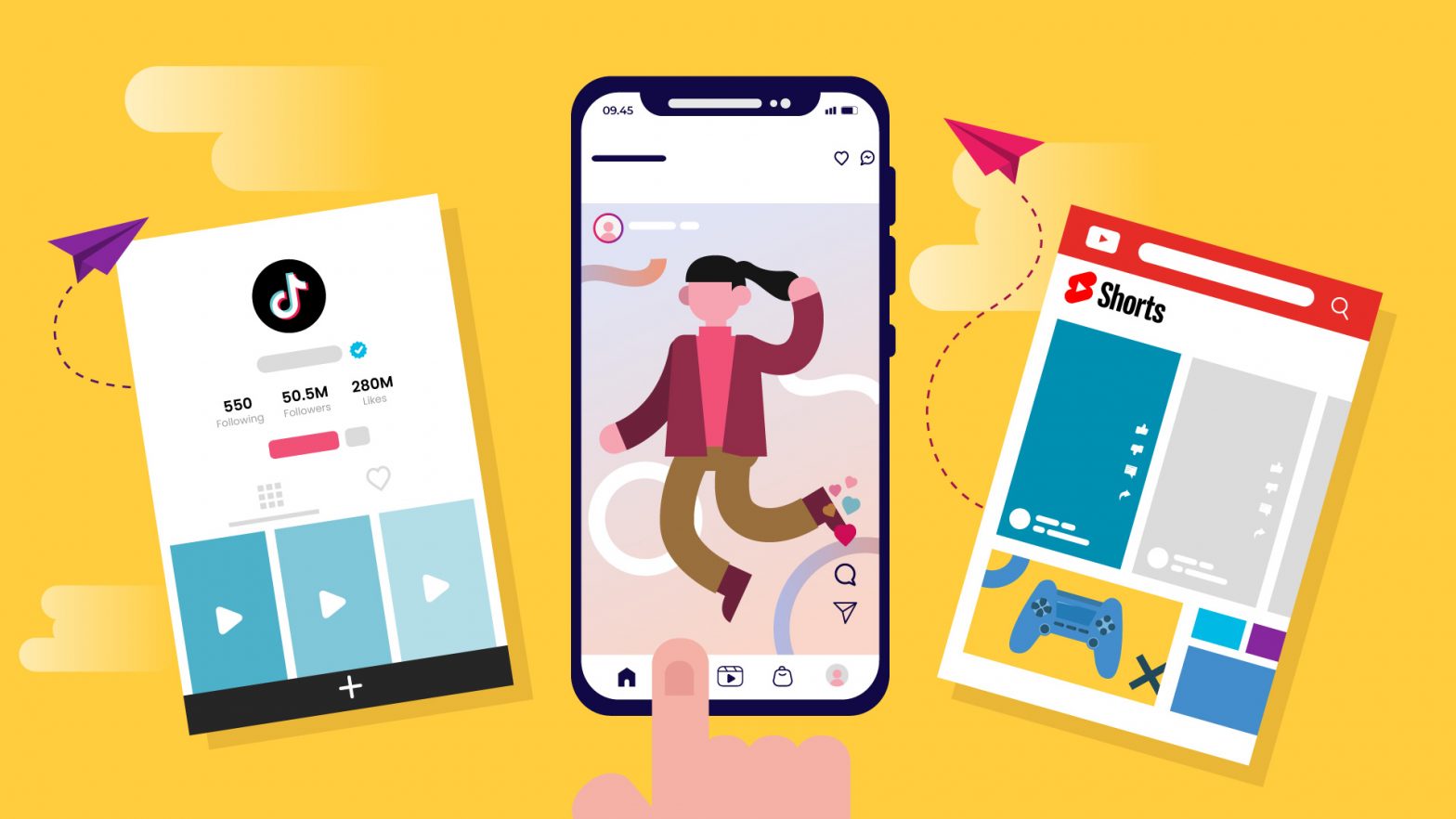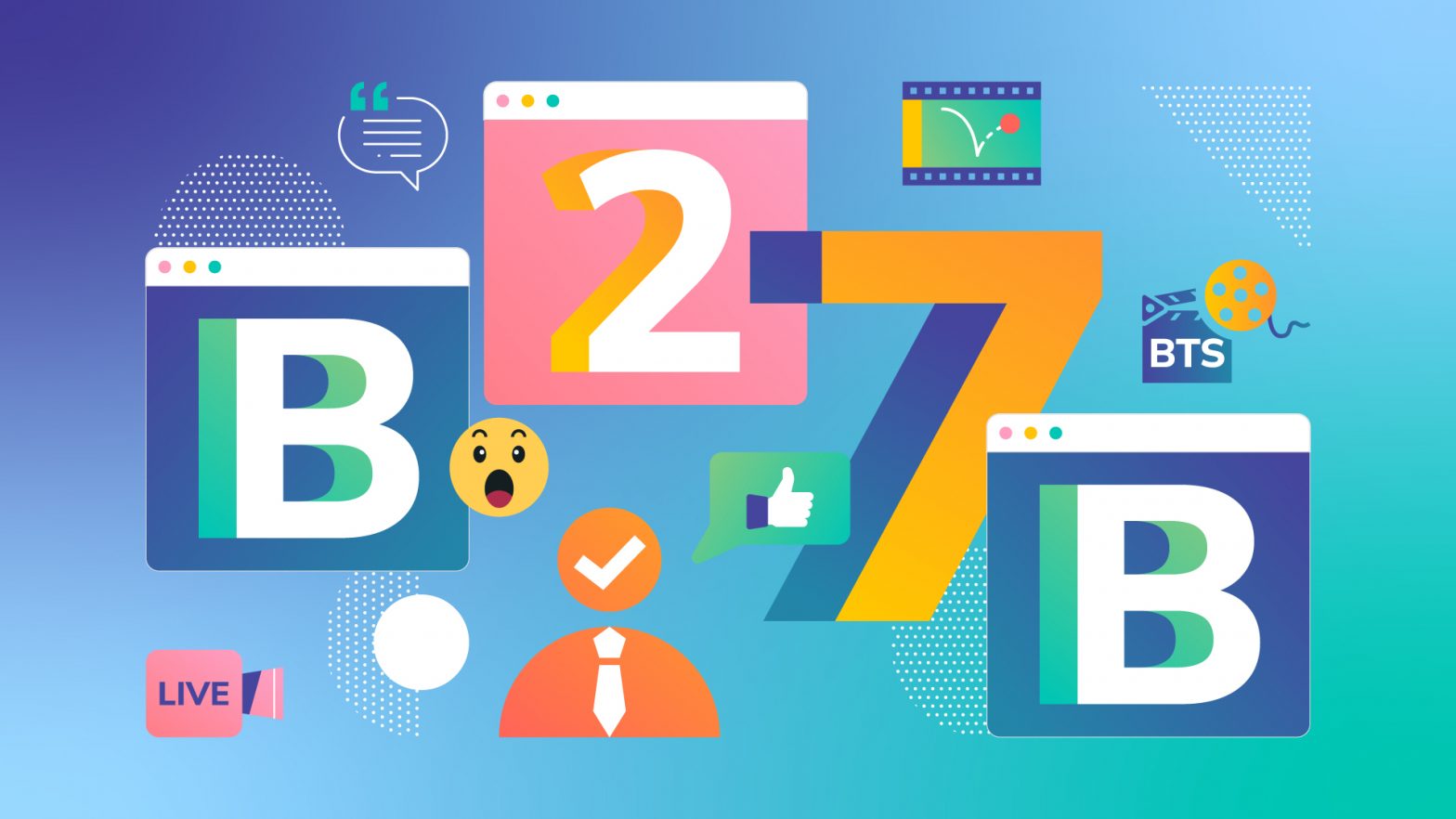Video marketing is a great way to capture potential customers’ attention while they are visiting your website or browsing your social media feeds. And this year, short-form videos are predicted to make up more than 82% of internet traffic.
However, the average user’s attention span is only around 8 seconds. So the question is, how can we ensure our short-form videos grab our customers’ attention just enough so they would stick around for the long haul?
If you are a business owner trying to promote your online store and stay ahead of competitors, keep reading to understand the short-form video marketing trends of 2022 and boost your customers’ engagement.
Benefits of Video Marketing
Video is very versatile. It can fit any audience and communicate any message that can align with various goals – driving more traffic, increasing the number of leads, educating the audience, boosting the customer support team’s performance, and much more.
Some advantages of video content:
- Video highlights authenticity and helps you build trust. People want to know who they are about to do business with and form a connection with you. With great storytelling, you’re one step closer to developing long-lasting customer-brand relationships.
- Sharing information quickly and efficiently. 94% of marketers claim that video has helped them increase user understanding of their product or service.
- Boosting conversions and sales. Including a video on the landing page has improved many merchants’ results.
- Improving visibility on Google. The time customers spend on your website after finding you on Google search impacts how you rank in the search results.
- Saving time. This is true for both of your team’s time trying to explain things to customers and your customers who can take in loads of information within a short period.
Video Marketing Trends To Follow In 2022
Videos are all about storytelling, and this also stands for short-form videos. Your goal is to share a meaningful story with your audience, motivating them to take action.
For all the video content you create, remember to think about small details such as colors, angles, and necessary video specs for different social media platforms so your content will resonate with your brand and fit on the specific platform.
Apply the following techniques to ensure customers will be drawn in right away and want to find out more about your brand.
#1. Create Shoppable Videos
One of the biggest short-form video trends in 2022 is shoppable content that helps increase brand awareness, attract new leads, and boost sales.
Such videos are highly related to social media, where customers can shop while scrolling their feeds or watching their stories simply by tapping on clips and buying instantly.
Social media shopping creates a convenient customer experience for shoppers. Steps to get started with selling on social platforms:
- Set up business accounts on the platforms you wish to engage users (e.g., Instagram Shop and Snapchat)
- Upload your product catalog
- Submit your store for a review
- Get creative and engage with customers
However, social platforms are not the only place to use shoppable videos. Different brands from fashion retailers to furniture stores are now also using shoppable videos on their websites to further boost customer experience.
By including videos on your product pages, you help customers discover new products and increase their visiting time on your website.
Example of using a shoppable video
Ted Baker has mastered the art of using shoppable videos on their website.
Source: TedBaker
They showcase different products, and customers can simply click on various items that will redirect them to their shopping carts to select the desired color and correct size.
#2. Try Out Explainer Videos
Explainer videos are great to help potential buyers and loyal customers get a better understanding of your offered products. In fact, 68% of customers wish to learn about a new product via a short video.
A compelling explainer video can showcase the value of your goods in an emotionally persuasive way. To achieve this, choosing the right type of explainer video to provide additional value to your brand depends greatly on what you are selling.
The main three types of explainer videos are:
- Animated explainer videos are perfect for explaining services and intangible products such as software, apps, etc. Animated videos can also be easily updated when there’s been a significant improvement to the product.
- Live-action explainer videos aim to achieve the same things as animated videos but feature real people and showcase various things.
- Do-It-Yourself (DIY) videos are great for goods related to cooking, fitness, different crafts, etc.
But whichever your approach to explaining what you are selling is, remember to keep your videos short and get right to the business. Once your customers are hooked, give them an option to proceed to a more detailed video.
Example of using explainer video
The WIAL explainer video is fast-paced and colorful, immediately grabbing your attention. In just a minute and a half, potential customers can take in loads of information and see the benefits of training and certification programs on the WIAL.
#3. Use Text and Captions
According to a Verizon Media report, while sound is an essential part of videos, 69% of customers claim to watch videos without a sound in public places, and 25% do the same in private places.
To ensure your video can capture attention and convey meaning even without a sound, include text or captions that help navigate viewers through your video.
However, avoid overcrowding your video to keep your visual language shining through and help customers gain a similar experience no matter if they are watching the video with or without the sound.
Example of using text and captions
Take a look at Milk Makeup Kush showcasing their eyeliner. Their live-action DIY product tutorial is catchy, both with and without a sound.
#4. Encourage User-Generated-Content
Video helps you build trust between your brand and customers. And content from your followers will boost your credibility even more as it brings your customers’ viewpoint to the table.
If a real non-paid person talks about their purchase and gets excited over it, the excitement will be infectious to the people watching the video. Here are some ideas on how to boost user-generated-content (UGC):
- Make unboxing an experience on its own. Put effort into packaging your products so the unboxing of the purchase would be fun and aesthetically pleasing so customers would want to capture the process.
- Hold contests and promotions to encourage UGC about your brand. For instance, ask shoppers to take a 15-30 second long video of themselves saying what they would use your product for and let them upload it on their social media.
- Involve customers and make them feel special so they would be eager to share the special moments with their friends. Examples of this are using people’s names, locations or sharing relatable experiences.
Example of user-generated content
One of the best examples of a brand taking advantage of the possibilities of user-generated content is the Share a Coke campaign.
Coca-Cola used personalization by releasing limited edition bottles with over 1000 names. Of course, people got excited over finding bottles with their own name and creating content around it. Thanks to this, the Share a Coke campaign boosted the company’s declining revenue and made a 2% increase in the US.
But of course, we all can’t follow Coca-Cola’s footsteps so easily. If you wish to encourage your customers to contribute with video content, unboxing videos are one of the most guaranteed ways to go.
Unboxing videos are wildly popular and can be found almost everywhere and of everything. To boost the chances of customers filming their unboxing experience, make it worth their time and show it.
Everly Wellness shines out by promoting their customers’ unboxing videos on their social channels. This creates more trust within prospect customers and also boosts the chances of others creating their own unboxing videos to share with their followers.
#5. Optimize Your Videos For Search
Optimizing your videos is not just this years’ trend. Optimization should be your brand’s overall strategy to try and gain as much visibility with everything you do. But as video is gaining more popularity, let’s make video optimization trendy, too.
83% of people say that videos increase the time customers stay to browse their store. This, in turn, already helps to boost your visibility on search engines. However, there is much more you can do to get the most out of your video content.
- Choose the right video hosting platform. Sites like Youtube and Vimeo are great for general brand awareness. But if your goal is to drive traffic to your website and convert leads. You might want to look for an alternative such as Wistia.
- Attract customers with your video title and description. If you have ever written a blog. You know that the title and meta description have a role to play in search engine ranking. Craft your titles and descriptions, and don’t forget to do keyword research.
- Make your video thumbnail engaging. A strong image can significantly impact click-through rates and many other video SEO metrics.
- Highlight the video on your page. If you have embedded a video on your website, make it easy to find. Don’t let customers scroll for miles to see the video as this will hurt your play rates.
However, don’t rely solely on SEO. If you have a video you know is worth watching, share it on your socials. Also, use paid video advertising to connect with new customers.
Ready, set, shoot
Video content is as popular as ever, but creating a video to capture customers’ attention has never been so demanding.
With our everyday lives being so busy and our attention shifting all the time, short videos have the potential to grab people’s attention for long enough to turn them into loyal customers.
With the trends mentioned above, you can get started with creating short video content, reach more people and engage with your audience. Remember, always tell a great story, keep your content short and grab attention within the first few seconds.
Author Bio: Kadi Arula, Content Writer & SEO Manager at Vertex








